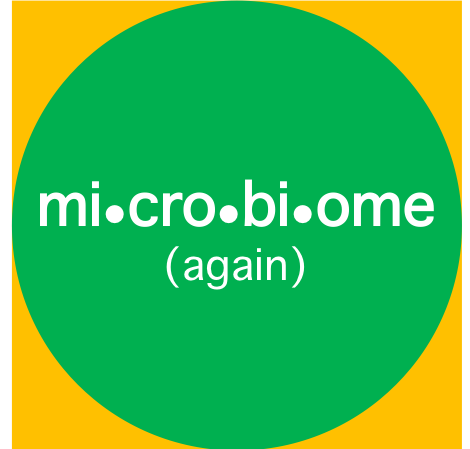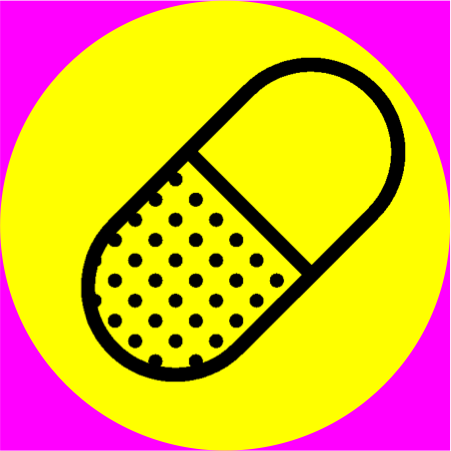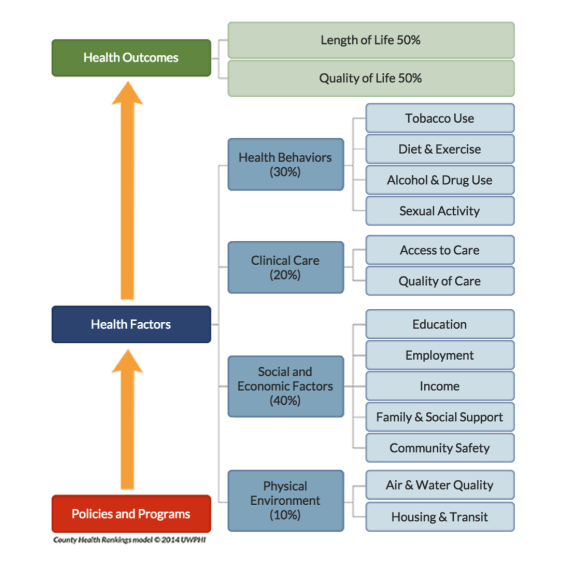Category: Evidence
The Microbiota Vault
 In January, I moderated a symposium that was based (virtually) in Peru to discuss preserving both the culture and the microbes of its indigenous people. Similar events, organized by the Global Microbiome Network, are planned in other regions around the world where indigenous populations still exist. Why is this important?
In January, I moderated a symposium that was based (virtually) in Peru to discuss preserving both the culture and the microbes of its indigenous people. Similar events, organized by the Global Microbiome Network, are planned in other regions around the world where indigenous populations still exist. Why is this important?
I’ve written before (here and here) about the importance of a healthy microbiota – those trillions of microbes that live in and on our bodies, especially in the gut. The collection of genes inside these microbial cells in called the microbiome. There are more genes in the microbiome than there are genes in the human body. These microbial genes perform necessary functions in our bodies like helping to digest food and producing vitamins. If some of these microbes die off, the functions performed by their genes are also lost. The loss of microbial species in our guts appears to be playing a role in the rise in chronic diseases that we are seeing in industrialized society. More and more research studies confirm the role of the microbiome in health and disease.
Sex and gender matter in COVID-19
Some people get extremely sick after infection with the novel coronavirus and other individuals remain asymptomatic or have a very mild course. We have no proven therapies (although there is some research that suggests an antiviral drug called remdesivir may help) and no short-term hopes for a vaccine. Clinical trials are in progress and public health strategies are being implemented. But, in order to combat COVID-19, the disease caused by the novel coronavirus, we need to look at the pandemic and the possible interventions through a sex and gender-based lens. Here’s why.
Read moreCOVID-19 in a nutshell
As a former hospital-based infectious diseases physician, I have been reading everything I can about the coronavirus pandemic. Because this is a new coronavirus not previously seen in humans, the World Health Organization gave the disease the name COVID-19, which stands for Coronavirus Disease 2019. While there is a flurry of high quality up-to-the-minute, information available, especially on Twitter, it is challenging to get the most important information in one place. Based on questions I am getting, here is my attempt to provide a quick overview and answer the key questions.
Read moreThe skinny on CBD
 It seems like everyone I know is taking CDB for something (insomnia, pain, anxiety, etc.) but what exactly is it and does it really work? And why is it so popular?
It seems like everyone I know is taking CDB for something (insomnia, pain, anxiety, etc.) but what exactly is it and does it really work? And why is it so popular?
CBD stands for cannabidiol and it is one of over 100 chemicals (called cannabinoids) that are extracted from the cannabis plant. Hemp and marijuana are different types of cannabis. Marijuana causes a “high” because it contains a lot of tetrahydrocannabinol (THC) but hemp has more CBD and very little THC. Most CBD you can buy comes from the hemp plant and is legal (in most US states) as long as it contains less that 0.3 percent THC.
Is the microbiome the key to health?
 Interest in the microbiome – those trillions of bugs (bacteria and other microorganisms) in your gut – is increasing and according to an article in the NY Times, drug companies are trying to get in on the action.
Interest in the microbiome – those trillions of bugs (bacteria and other microorganisms) in your gut – is increasing and according to an article in the NY Times, drug companies are trying to get in on the action.
As I’ve written before, these bugs may be important in the development of chronic disease leading to the possibility that you can “transplant” healthier bugs into someone with a disease. In fact, transferring the feces (poop) from one person to another has been shown to cure cases of Clostridioides difficile (C. diff) colitis (a life threatening infection of the gut caused by overuse of antibiotics). This is called fecal microbiota transplantation (FMT). Studies are ongoing to see if FMT can be used to treat inflammatory bowel disease (IBD), irritable bowel syndrome (IBS) and other chronic conditions. But there are a limited number of places doing FMT so people are doing their own transplants by harvesting the feces of a friend or family member and using a home blender (I’ll spare you any additional details but the DIY instructions are readily available online).
Patient-collected data
 In April 2018, I participated in the 2018 Quantified Self (QS) Symposium on Cardiovascular Diseases held in San Diego. I was reminded of that session several weeks ago while attending the 2nd Annual Meeting of the Society for Participatory Medicine. In both conferences I was struck by the power of patients’ observations and measurements to manage their own diseases.
In April 2018, I participated in the 2018 Quantified Self (QS) Symposium on Cardiovascular Diseases held in San Diego. I was reminded of that session several weeks ago while attending the 2nd Annual Meeting of the Society for Participatory Medicine. In both conferences I was struck by the power of patients’ observations and measurements to manage their own diseases.
I first learned about the Quantified Self movement a few years ago while reading about Larry Smarr, an astrophysicist and computer scientist who started tracking his own exercise and weight but ultimately began expanding his self-tracking to include blood tests when he was told he had “pre-diabetes”. He ultimately diagnosed his own Crohn’s disease long before he had any symptoms based on analyzing his own blood and stool tests (including twice weekly stool microbiome analysis). He has since published a how-to guide in a biotechnology journal and participated in planning his own bowel resection for Crohn’s disease in 2016.
Clinical trial problems in the news (again)
 Randomized controlled trials (RCTs) may have lots of problems, but they remain the “gold standard” to determine whether a drug or treatment works. A recent study published in the BMJ, again raises concerns about trusting clinical trial results. The situation is outlined in an article in the New York Times about the antidepressant drug Paxil (paroxetine) and its safety in teens. The original study was published in 2001 in the Journal of the American Academy of Child and Adolescent Psychiatry (JAACAP) and the authors concluded that Paxil is “generally well tolerated and effective” for adolescents with major depression. However, since that time, experts have questioned whether the data really supports this conclusion and whether Paxil is really safe in young adults with depression.
Randomized controlled trials (RCTs) may have lots of problems, but they remain the “gold standard” to determine whether a drug or treatment works. A recent study published in the BMJ, again raises concerns about trusting clinical trial results. The situation is outlined in an article in the New York Times about the antidepressant drug Paxil (paroxetine) and its safety in teens. The original study was published in 2001 in the Journal of the American Academy of Child and Adolescent Psychiatry (JAACAP) and the authors concluded that Paxil is “generally well tolerated and effective” for adolescents with major depression. However, since that time, experts have questioned whether the data really supports this conclusion and whether Paxil is really safe in young adults with depression.
In the recent BMJ analysis, the authors looked at the data from the original 2001 study and also some additional data they were able to get from the drug company that makes Paxil, GlaxoSmithKline. They concluded that Paxil is neither safe nor effective in adolescents with depression.
Food and long life
 There is so much in the news about food that it is hard to know what to eat. But there is reason to believe that food can play an important role in health. I’ve written about the connection between food and inflammation, the effect of food on the bacteria in the gut, how food can influence the course of a disease and the importance of telling stories about food.
There is so much in the news about food that it is hard to know what to eat. But there is reason to believe that food can play an important role in health. I’ve written about the connection between food and inflammation, the effect of food on the bacteria in the gut, how food can influence the course of a disease and the importance of telling stories about food.
Recent scientific papers in medical journals have suggested that spicy food is associated with a lower risk of death and that a Southern diet is associated with a greater risk of heart disease and stroke.
However, scientific studies about diet are difficult to interpret because they often depend on people keeping track of what they eat. It is also hard to know if other factors are influencing the results, which is why both of these studies can only conclude an “association” between the particular diet and the outcome and not a “cause”.
How to pick a surgeon
 Several years ago a close friend asked me to recommend a surgeon for an elective procedure. I told her I had a colleague with a great bedside manner who also had great technical skills. He was absolutely the person I would go to if I needed general surgery. My friend went to see him but ended up using a different surgeon. When I asked her what she liked about the other guy, she said that he told her that he was “the best” surgeon to perform the procedure. She didn’t like his personality but he instilled her with confidence.
Several years ago a close friend asked me to recommend a surgeon for an elective procedure. I told her I had a colleague with a great bedside manner who also had great technical skills. He was absolutely the person I would go to if I needed general surgery. My friend went to see him but ended up using a different surgeon. When I asked her what she liked about the other guy, she said that he told her that he was “the best” surgeon to perform the procedure. She didn’t like his personality but he instilled her with confidence.
The truth is that there is no single “best” surgeon for everyone. And there are many factors that go into picking a surgeon: insurance issues, convenience, etc. And there are advantages to going to a surgeon who works well with our primary care physician (communication) and in having surgery in a place that has an electronic medical record that our primary care physician can access (coordination of care). But the most important thing is how skilled the surgeon is at performing the surgery we need. How do we figure that out? The short answer is that we don’t.
Using art to heal
 Because Health is Life, our lifestyles are just as important to our health as going to the doctor or taking our medicines. In a paper published June 30, 2015 in the Annals of Internal Medicine, a study looking at survey data found that half the heart disease deaths in the US from 2009-2010 were caused by 5 factors all of which can be modified through healthy behavior: smoking, obesity, high cholesterol, diabetes and high blood pressure. But many of these behaviors are difficult to change and are influenced by our families, our culture and our community.
Because Health is Life, our lifestyles are just as important to our health as going to the doctor or taking our medicines. In a paper published June 30, 2015 in the Annals of Internal Medicine, a study looking at survey data found that half the heart disease deaths in the US from 2009-2010 were caused by 5 factors all of which can be modified through healthy behavior: smoking, obesity, high cholesterol, diabetes and high blood pressure. But many of these behaviors are difficult to change and are influenced by our families, our culture and our community.
This picture shows that clinical care by doctors and hospitals accounts for only about 20% of health outcomes. The picture comes from a project called County Health Rankings developed by the University of Wisconsin Population Health Institute (and supported by the Robert Wood Johnson Foundation) that looks at health by county in the US. Addressing factors like cigarette smoking, income, education, employment, housing and clear air can help make communities healthier places to live.
We need to find ways to build healthier communities and the arts may be one way to accomplish this.